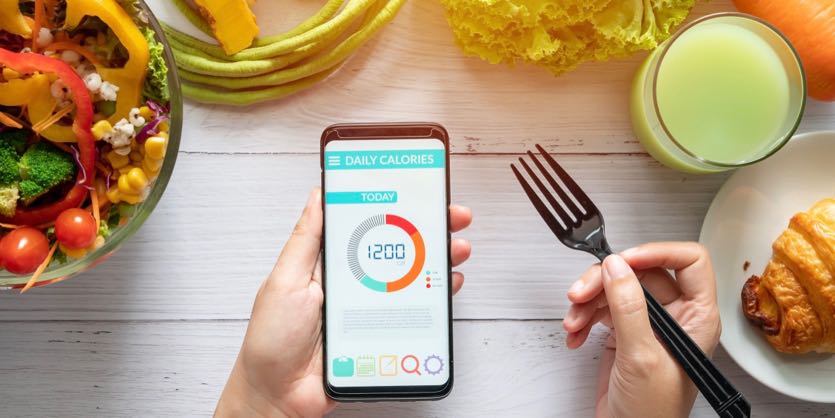How to Achieve Healthy Weight Loss that Lasts

If you’re alarmed by the number on the bathroom scale, you probably want to find a way to lose weight fast. But healthy weight loss takes place over time, not over the weekend.
Small, manageable changes to your diet and exercise will yield lasting results—even if it feels too slow. It’s important to think about weight loss as a sustainable solution, not a quick fix. This kind of thinking isn’t your fault.
The idea that you can lose a lot of weight quickly and maintain it long-term is a classic weight-loss trap. Avoid it by sidestepping the well-trod path of rigid diets that leave you feeling hungry. These diet plans produce results that may not last long. You could quickly tire of the restrictions and find yourself rebounding into old habits. And it’s more likely you gain the weight back than see lasting changes.
That’s because quick weight loss isn’t the best way to settle at a healthy weight. In other words, it simply isn’t sustainable.
Incremental changes over a longer period of time aren’t flashy or cool, but they are the best path to a healthy weight. This includes lifestyle modifications and shifts in the way you think about food, rather than just how much you eat.
Eat up these facts about how this measured approach is the right one for healthy weight loss that will last.
Why Healthy Weight Loss is a Marathon, Not a Sprint

Here’s a fun fact: It takes a deficit of 3,500 calories to lose one pound (equal to about 0.5 kilograms) of fat. If that seems like a lot of calories, that’s because it is. The average recommended daily calorie intake for adults is 2,000 calories. So, one pound of fat represents almost as many calories as two full days of eating.
This is one reason why healthy weight loss is a gradual process. If you want to lose weight, you have to start by reducing the number of calories you consume. If you eat 500 fewer calories each day than you burn, you can expect to lose one pound over the course of a week.
You can achieve this calorie deficit with diet alone. Or you can mix in exercise to burn more calories in a day. Thirty minutes, five times a week is a great place to start. Focus on any type of exercise or activity that increases your heart rate and moves your body.
By incrementally altering your diet and exercise habits, you can safely lose one to two pounds a week. At the same time, you’re creating manageable lifestyle habits that can stick.
| The Open Secret to Weight Loss: Calorie Deficit
|
Typical Changes in Your Weekly Weight-Loss Rate

Even a gentle, incremental start to losing weight can provide you with an encouraging beginning. That’s because it’s possible to lose more in the first few weeks of your weight loss journey.
Build on the momentum, but understand what’s going on biologically. This quick start is the result of your body ridding itself of extra water weight. But staying the course means your weekly weight-loss rate could eventually settle around a pound or two per week—the incremental, sustainable rate you want.
Be cautious of diets and exercise programs that promise faster results. And remember that it’s typical to experience a weight-loss plateau a few weeks after you start. This is your body’s natural response to a sudden drop in weight. Along with the fat loss you’re aiming for, it’s possible to lose a bit of muscle mass, too.
Since muscles are the calorie-burning machines of the body, decreasing their mass can hurt your rate of calories burned. You can minimize muscle loss by ramping up your exercise and keeping your protein intake high. That way you’ll bust through the plateau in no time.
One way to break through periods of changing weight-loss rate is to focus on why you’re doing it. People lose weight for many different reasons. But the fact is, living at a healthy weight benefits your overall well-being.
The heart is one of the first organs to see lasting benefits. Maintaining a healthy weight supports your cardiovascular function, circulation, and reduces the workload on your heart.
Sleep issues are often linked to being overweight. So, one added benefit of your healthy weight loss could be improved sleep. Healthy weight loss can also be good for your mood and help support healthy energy levels. You may find you have more strength and endurance than before, along with a boost in self-esteem that often comes with weight loss.
Designing a Sustainable Weight-Loss Diet: Quality of Calories vs. Quantity of Calories

Diet is one of two main ways to control your calorie balance sheet. So, what you eat obviously plays a key role in the success of your weight loss journey.
While the numbers vary individually and by gender, adults need between 1,600 and 3,000 calories each day to thrive. As you’ve read above, a moderate, consistent calorie deficit will be enough to trigger weight loss.
But you should think beyond simple calorie counts.
It’s important to know all foods are not created equal. Some are high or low calorie. Some foods are filling, while others are not. Look at what you’re eating to determine if the calories in your food are being put to good use.
High-calorie, low-quality foods eat up a large piece of your daily intake, but don’t fill you up. Take soda for example. A 12-ounce serving of the sugary drink represents about 150 calories. These empty calories are all liquid, without fiber or other nutrients, and leave you hungry. Eating 150 calories of filling, fibrous vegetables have a different outcome.
Cutting out empty calories will bring you closer to your weight loss goals. Aim to make high quality, whole foods—like vegetables and lean protein—the center of your diet. Poultry, lean beef, and fatty fish provide quality nutrition and ample energy without the extra calories, starches, or sugars typically found in processed foods. Green vegetables are naturally low-calorie and packed with fiber that leaves you feeling full long after you eat.
On a daily basis, that means limiting high-calorie, low-fiber foods—like sugary drinks, fruit juice, and candy. Replace the drinks with water and snack on an apple instead. Always remaining mindful of where your calories are coming from can help you take control of your diet and create lasting, healthy weight loss.
| Up the Ante on Exercise
It often takes healthy eating and exercise to create lasting weight loss. Experts recommend 150 minutes of exercise each week to achieve healthy weight loss. That can look like 30 minutes of exercise, five days a week, or three 50-minute workouts. One of the best tips for your meeting long-term weight loss goals is to find a physical activity that suits you. Exercise isn’t limited to grueling days at the gym. It can look like a walk or jog with a friend, a hike in the woods, playing a sport, or a group fitness class in your neighborhood. Don’t beat yourself up if your exercise routine is at a beginner level. Everyone starts somewhere. You will gain strength over time. Your endurance will improve. Soon you’ll find you can do more, have more fun, and feel better. |
Celebrating Non-Scale Victories Helps with Long-Term Weight Loss

Over the course of your weight-loss journey, there will be hiccups that slow or halt your progress. You might indulge in too many sweet treats, catch a cold, or suffer an injury. When these obstacles pop up, don’t fret.
Trust the process. Continue to eat well. Also keep incorporating regular exercise to help break out of your slump. No matter whether your weight loss is flourishing or has plateaued, celebrate achievements other than the number on the scale.
Here are some examples of non-scale victories worthy of revelry:
- Fitting into old clothes
- Keeping up with your kids
- Increasing endurance during exercise
- Experiencing better sleep
- Developing a new love for healthy food
- Feeling more energized
- Gaining self-confidence
- Noticing an improved sense of overall health and wellbeing
These non-scale victories will make the excitement of reaching your goal weight even sweeter. You’ll feel better in your body and see all the fruits of your hard work.

Remember that a slow, steady pace is the key to long-term weight-loss success. When you focus on the whole-body benefits of weight loss, you’ll summon the willpower to keep going. If you need more motivation, think of your heart, mental health, sleep, and endurance improving each day. Reaching a healthy weight has added benefits that set you up for a happy and full life ahead.
References
https://www.cdc.gov/healthyweight/losing_weight/index.html
https://www.health.harvard.edu/blog/10-behaviors-for-healthy-weight-loss-2018102415074
https://www.mayoclinic.org/healthy-lifestyle/weight-loss/in-depth/weight-loss/art-20047752
https://www.healthline.com/nutrition/how-to-lose-weight-as-fast-as-possible#section6
https://www.nhlbi.nih.gov/health/educational/lose_wt/wtl_prog.htm
https://www.nbcnews.com/better/health/what-5-months-consistent-healthy-weight-loss-looks-ncna829356
https://www.livestrong.com/article/76506-weight-loss-per-week/
https://www.everydayhealth.com/heart-health/how-losing-weight-changes-your-heart.aspx











